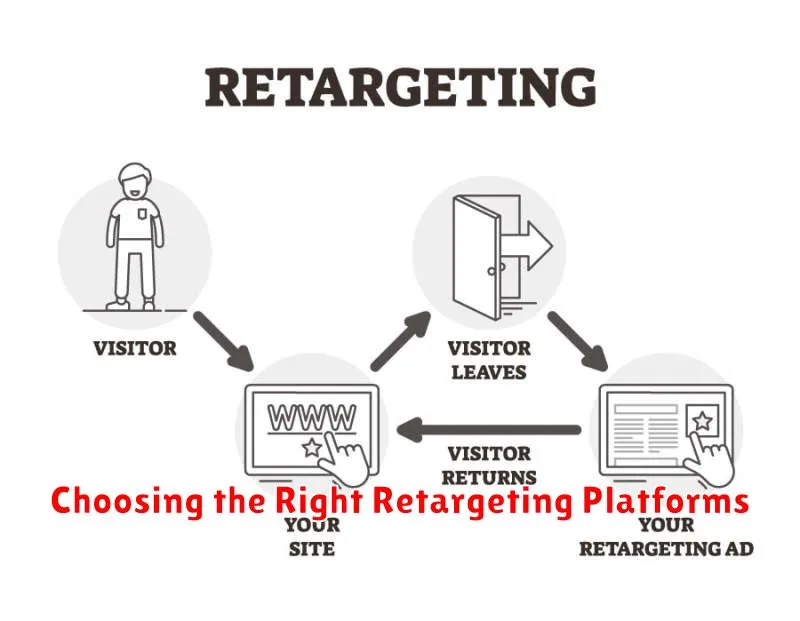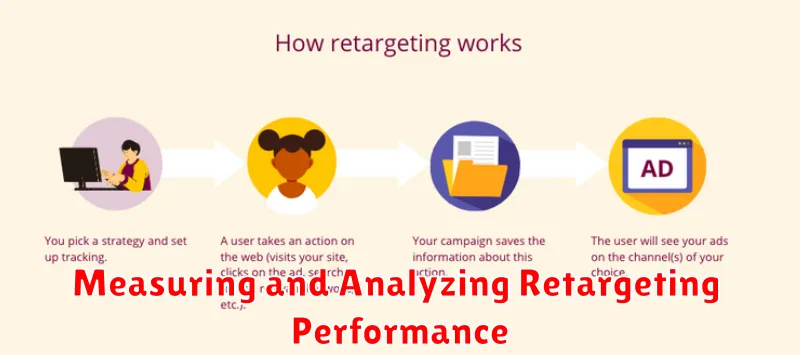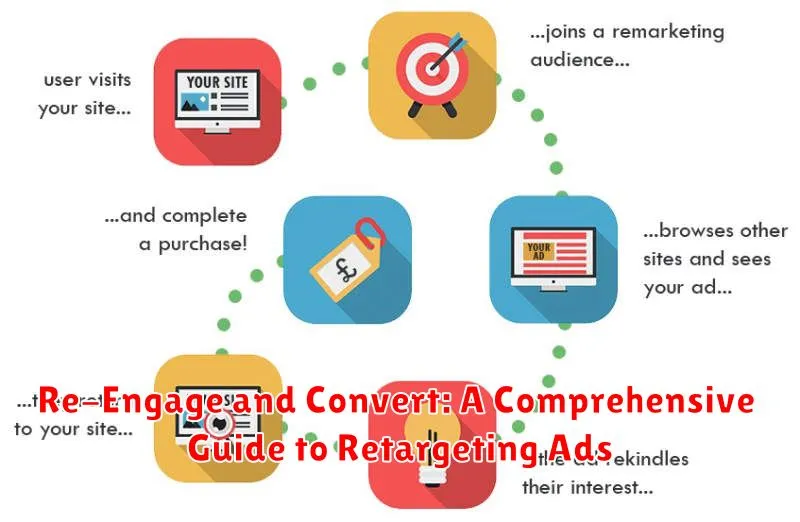Are you losing potential customers who visit your website but don’t convert? Do you want to re-engage those valuable prospects and turn them into paying customers? This comprehensive guide to retargeting ads will provide you with the strategies and insights needed to maximize your return on ad spend (ROAS) and boost your conversion rates. Learn how to effectively implement retargeting campaigns across various platforms, understand the intricacies of retargeting strategies, and discover best practices for creating compelling retargeting ads that recapture lost opportunities and drive sales.
Retargeting, also known as remarketing, is a powerful digital marketing technique that allows you to reconnect with users who have previously interacted with your brand. By strategically displaying retargeting ads to these individuals, you can remind them of their interest in your products or services, reinforce your brand message, and ultimately encourage them to complete a desired action, such as making a purchase or filling out a form. This guide will delve into the various retargeting platforms available, including Google Ads and social media channels, and provide actionable steps to create highly effective retargeting campaigns tailored to your specific business goals.
Introduction to Retargeting Ads
Retargeting ads, also known as remarketing, are a powerful digital marketing strategy that allows you to reconnect with users who have previously interacted with your website or app. Unlike traditional display advertising that targets a broad audience, retargeting focuses on individuals who have already demonstrated an interest in your products or services.
This tailored approach offers a second chance to capture potential customers who may have left your site without completing a desired action, such as making a purchase or filling out a form. By strategically displaying relevant ads to these users as they browse other websites or use social media platforms, you can effectively re-engage them and guide them back towards conversion.
Retargeting works by utilizing cookies or other tracking technologies to identify users who have visited specific pages or taken particular actions on your platform. This data enables you to create highly targeted ad campaigns that resonate with these individuals based on their previous browsing history and engagement patterns.
Understanding the Mechanics of Retargeting
Retargeting operates on the principle of tracking website visitors. This is primarily achieved through cookies, small text files stored in a user’s browser. When a user visits your website, a cookie is placed in their browser, tagging them as interested in your products or services.
Later, when this tagged user browses other websites within the retargeting platform’s network, the cookie triggers the display of your ads. This ensures your ads are shown to individuals who have already demonstrated a prior interest, thereby increasing the likelihood of conversion.
Pixel tracking is another essential component. A small piece of code, often referred to as a pixel, is placed on your website. This pixel tracks user behavior, providing valuable data for ad optimization and audience segmentation. This data allows for more precisely targeted campaigns, focusing on specific actions users took on your site.
Setting Up Your Retargeting Campaigns
Setting up retargeting campaigns requires careful planning and execution. Defining your target audience is the first crucial step. Segment your audience based on website behavior, such as pages viewed, products added to cart, or past purchases. This allows for more personalized ad delivery.
Next, install the necessary tracking pixel or code on your website. This snippet of code allows you to track user activity and build your retargeting lists. Ensure it’s implemented correctly across all relevant pages.
Choose your campaign objectives. Are you focused on driving conversions, increasing brand awareness, or promoting specific products? Your objective will influence your bidding strategy and ad creative.
Finally, set up your campaign parameters within your chosen retargeting platform. This includes defining your budget, bidding strategy, ad scheduling, and target audience segments. Regularly monitor and optimize your campaigns for optimal performance.
Choosing the Right Retargeting Platforms

Selecting the right retargeting platform is crucial for campaign success. Each platform offers unique features, audience reach, and pricing models. Carefully consider your business goals and target audience when making your decision.
Google Ads offers extensive reach across its search and display networks, making it a powerful choice for many businesses. Its detailed targeting options and robust analytics allow for precise campaign optimization.
Facebook and Instagram’s retargeting capabilities leverage their vast social media user base. These platforms are excellent for connecting with users based on demographics, interests, and behaviors, especially for B2C marketers.
Other specialized platforms cater to specific niches or industries. These might be beneficial if your target audience is concentrated within a particular platform or community.
Finally, consider the technical integration with your existing marketing stack. Some platforms may offer seamless integrations with your CRM or analytics tools, streamlining campaign management.
Crafting Compelling Ad Creatives
Visual Appeal is paramount. Use high-quality images and videos that are relevant to your products or services. Ensure your branding is consistent and easily recognizable.
Clear Messaging is crucial. Keep your copy concise and focused on a single, compelling offer. Highlight the value proposition and address any potential objections.
Targeted Content resonates. Segment your audience and tailor your creatives to their specific interests and behaviors. Personalization can significantly improve click-through rates.
Strong Call to Action is essential. Tell your audience exactly what you want them to do. Use verbs like “Shop Now,” “Learn More,” or “Get a Free Quote.”
A/B Testing is key to optimization. Experiment with different visuals, copy, and calls to action to determine what performs best. Continuously refine your creatives based on the data.
Segmenting Your Audience for Personalized Ads
Effective retargeting relies heavily on segmenting your audience to deliver personalized ads. Generic retargeting can be annoying and ineffective. Instead, tailor your messaging to specific user behaviors and characteristics.
Consider these segmentation strategies:
- Website Behavior: Segment users based on pages visited, products viewed, or time spent on site. Target users who abandoned their shopping carts with specific product reminders and offers.
- Engagement Level: Differentiate between casual browsers and frequent visitors. Tailor your ads accordingly, offering exclusive deals to loyal customers.
- Demographics: Utilize demographic data to further refine targeting. For example, offer specific products based on age or gender.
- Purchase History: Offer complementary products or upgrades to existing customers based on previous purchases.
By segmenting your audience, you can deliver the right message to the right person at the right time, maximizing your retargeting ROI.
Measuring and Analyzing Retargeting Performance

Effectively measuring and analyzing your retargeting campaigns is crucial for optimizing performance and maximizing ROI. Keep track of key metrics to understand what’s working and what needs adjustment.
Start by monitoring your click-through rate (CTR). A low CTR may indicate that your ad creative isn’t resonating with your target audience. Experiment with different visuals and messaging to improve engagement.
Conversion rate is another vital metric. This tells you how many clicks are turning into desired actions, such as purchases or sign-ups. A low conversion rate may suggest issues with your landing page or offer.
Track your cost per click (CPC) and cost per conversion (CPA) to ensure your campaigns remain cost-effective. High CPC or CPA values might indicate the need to refine your targeting or bidding strategies.
Finally, analyze your return on ad spend (ROAS). This metric demonstrates the overall profitability of your retargeting efforts by comparing your ad spend to the revenue generated.
Best Practices for Successful Retargeting
Frequency capping is crucial. Overexposure can annoy potential customers. Set limits on how often your ads appear to a single user within a specific timeframe.
Exclude converted customers. Once a user completes the desired action, remove them from your retargeting audience. This prevents wasted ad spend and avoids frustrating customers who have already purchased.
Refresh your creative. Keep your ads fresh and engaging. Rotate ad visuals and messaging regularly to combat ad fatigue and maintain audience interest.
A/B test different elements. Experiment with various ad formats, visuals, copy, and calls to action. Analyze the results to identify what resonates best with your audience.
Tailor your ads to the platform. Optimize your ads for the specific platform where they will be displayed. Consider the platform’s user demographics and ad specifications.

